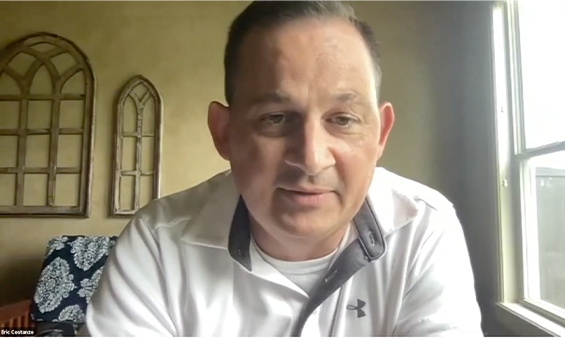Steve Donaldson is senior director of Rural Compassion for Convoy of Hope. He helped found Convoy of Hope in 1994 and started Rural Compassion in 2003. Before entering the nonprofit space, Donaldson served as a youth pastor, associate pastor and pastor. He holds a bachelor’s degree from Evangel University in Springfield, Missouri.

Current poverty rates in rural America exceed the poverty rates in urban communities, and there are significantly less social services available to address these needs, according to the National Advisory Committee on Rural Health and Human Services (NACRHHS). Persistent poverty counties have poverty rates of 20 percent or higher, and 88 percent of persistent poverty counties are rural.
The U.S. Department of Agriculture notes that one in four children in rural America lives in poverty. And rural areas have more single guardian households than urban areas. People in rural areas also struggle with unemployment, substance abuse and domestic abuse. According to NACRHHS, a rural teen is more likely to misuse drugs and alcohol than an urban teen. Pew Research Center declared drug abuse to be the leading problem in rural America.
As Christians we know that statistics are not the full picture, but we must ask ourselves: If the church vanished from these small towns, would anyone notice? Instead of asking, “How big is your church?” we should ask, “How is your church impacting its community?”
The Church’s Strategic Role
Several years back, I heard a lecture on small communities. The professor’s research revealed what I have observed. In the past, there were three foundations of a small town: the family, public schools and the local church. The community often centered around the local church. Over time, the family unit splintered, local churches lost much of their influence, and only public schools remained as a foundation in small towns. Despite this shift, the local church is still the best equipped to facilitate healthy development within communities.
Recently, a friend purchased a pair of jeans for over a hundred dollars, replete with designer holes and frays. His grandmother offered to wash his laundry while he was away, and after returning home, he found that Grandma had patched the holes and cut off the frays of his jeans. Grandma didn’t understand the value of the frayed jeans.
Likewise, outsiders of a small town often do not understand the community’s local culture and its interpersonal relationships. Because the church is made up of its community and because it is God’s highest order in a community, the local church can and must once again become a foundational entity in small town life.
A Change in Focus
Rural church pastors often understand the vastness of the poverty around them. They may wonder — while often battling their own limited resources — how they can minister to their community in need. Often, learning how to serve in these situations begins with a change in focus.
In “Crazy Love” Francis Chan says, “Christians are like manure: Spread them out and they help everything grow better, but keep them in one big pile and they stink horribly!”
Hiding behind the four walls of the church building makes the church itself ineffective and inconsequential. However, when a church longs to roll up its sleeves, spread out and collaborate together with their communities, a powerful force to address rural poverty can finally be unlocked.
Christian Communitarians
Rural Compassion works in over 1,000 communities, partnering with multiple churches of different denominations to train and coach their pastors to become communitarians. We suggest church leaders spend up to one third of their time working with community stakeholders. Collaboration between the church, schools, civic circles and government is essential. One rural pastor tells his story of becoming a communitarian:
I met with three law enforcement agency leaders, as well as the mayor, fire chief, Justice Court judge, soccer commissioner, directors of the counseling center, and the Chamber of Commerce. I also contacted hospice, the owners of the mortuary, hardware and lumberyard businesses, and the building inspector. I attended multifaith ministers meetings and made myself available to the hospital and the assisted care facility. My wife partnered with the local schools. Through these contacts, we are seeing how the church can intentionally serve the community.
Other ways of addressing community needs can include honoring public servants, offering classroom supplies for teachers, becoming a reading buddy in the schools, coaching sports teams, and undertaking community work projects.
Rural Compassion also resources churches in small towns. This year we will give away over 125,000 pairs of new shoes through the rural church to children in the local schools. All of these create intentional relationships through which we can collectively address the needs of poverty and ultimately share the love of Christ.
As the church positions itself as an important leader in its community to serve the dire needs rural communities face, we begin to see those same communities become places where children and families flourish. Thanks to local pastors and church congregants with ambition to collaborate with their communities and local stakeholders, there is a fresh spirit stirring through rural American communities.
This article originally appeared in Evangelicals magazine.



 View All Articles
View All Articles 


























